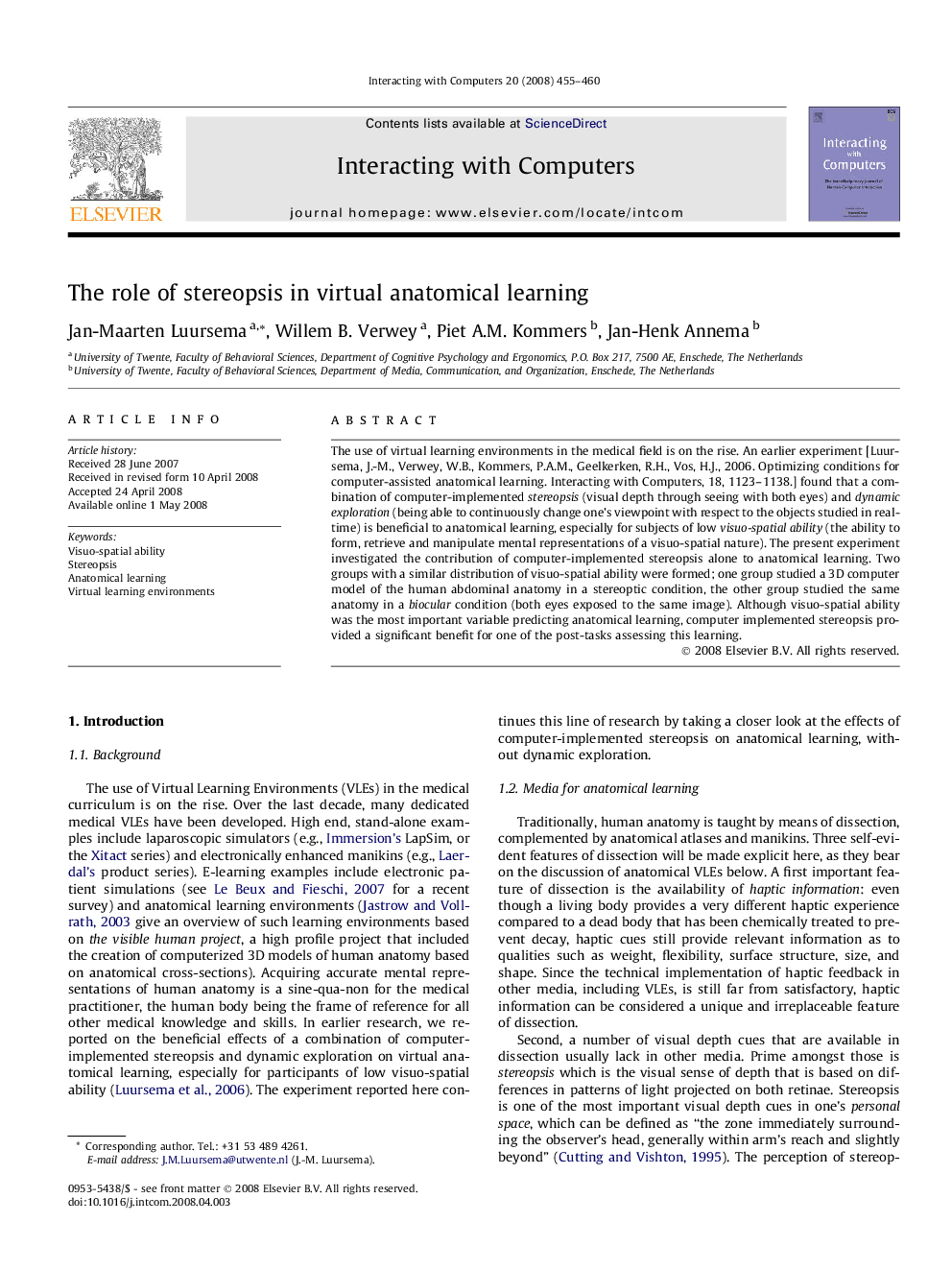| Article ID | Journal | Published Year | Pages | File Type |
|---|---|---|---|---|
| 551843 | Interacting with Computers | 2008 | 6 Pages |
The use of virtual learning environments in the medical field is on the rise. An earlier experiment [Luursema, J.-M., Verwey, W.B., Kommers, P.A.M., Geelkerken, R.H., Vos, H.J., 2006. Optimizing conditions for computer-assisted anatomical learning. Interacting with Computers, 18, 1123–1138.] found that a combination of computer-implemented stereopsis (visual depth through seeing with both eyes) and dynamic exploration (being able to continuously change one’s viewpoint with respect to the objects studied in real-time) is beneficial to anatomical learning, especially for subjects of low visuo-spatial ability (the ability to form, retrieve and manipulate mental representations of a visuo-spatial nature). The present experiment investigated the contribution of computer-implemented stereopsis alone to anatomical learning. Two groups with a similar distribution of visuo-spatial ability were formed; one group studied a 3D computer model of the human abdominal anatomy in a stereoptic condition, the other group studied the same anatomy in a biocular condition (both eyes exposed to the same image). Although visuo-spatial ability was the most important variable predicting anatomical learning, computer implemented stereopsis provided a significant benefit for one of the post-tasks assessing this learning.
